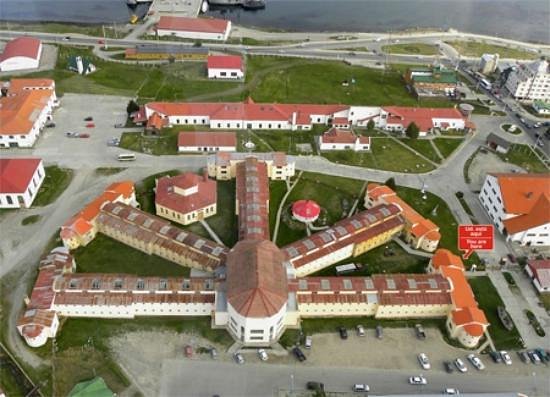The Prison at the End of the World
In 1896, the original site of the prison was Isla de los Estados. However, due to the harsh weather and extremely precarious conditions, the prison was moved to Ushuaia in 1902. A group of 40 volunteer prisoners, both women and men, settled in Puerto Golondrina in wooden sheds with tin roofs brought over from the island. That same year, the inmates began the construction of the prison building with a semipanoptic structure, divided into 5 wards with 380 individual cells, which at some point in history housed 600 convicts.
Numerous delinquents who had committed serious crimes came to be incarcerated here through the course of time, some serving life imprisonment and others serving considerably long sentences. Some famous characters spent time there, like the notorious serial killer Mateo Vans, a.k.a. ‘the Mystic’, Cayetano Santos Godino, a.k.a. ‘Petiso Orejudo’ or ‘Shorty Big Ears’ or Simon Radowitsky, the anarchist responsible for the assassination of Ramón Lorenzo Falcón, head of police in the early 1900s.
Amongst the many stories these prison walls tell, there is even one about Carlos Gardel having spent some time there.
Inmates were taken off the premises as a source of manual labour in tasks such as the construction of streets, bridges, public buildings and obtaining lumber. The work of the prisoners in the workshops covered the needs of the city. This is how, in 1910, the southernmost train in the world came to be built: The Southern Fuegian Railway or the Train of the End of the World. It was 25 km. long and at some point, it split in two separate routs, one heading towards what is nowadays the National Park.
Besides its severe discipline, the prison system enforced primary school teaching and remunerated work in 30 different sectors, some of them like forestry, outside the prison walls, as the inmates traveled from the center of the city to the woods by train they’d built.
This prison at the end of the world is the best way to become acquainted with the history and origins of Ushuaia City in Tierra del Fuego, to which it bears witness. Definitely a must do when visiting Ushuaia!

